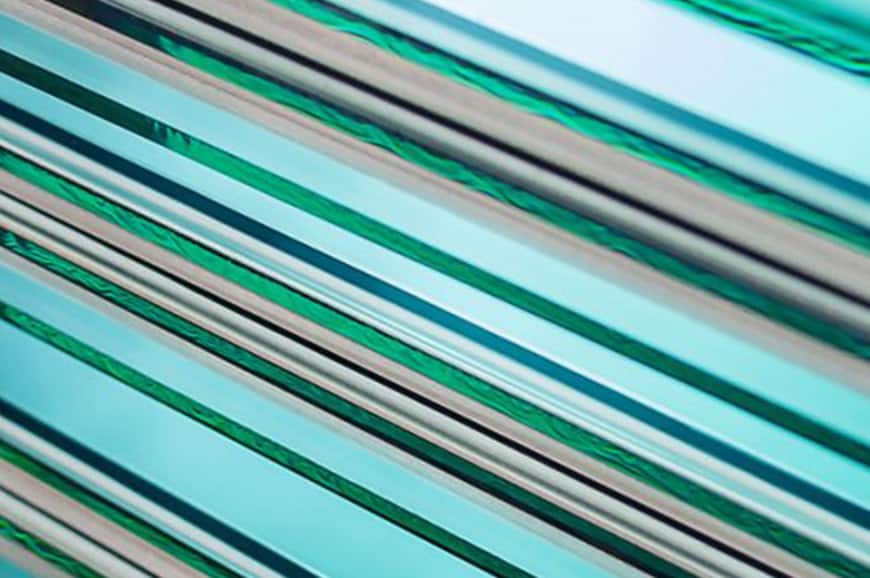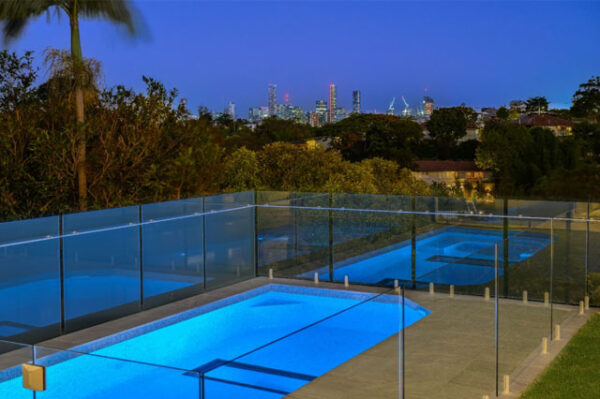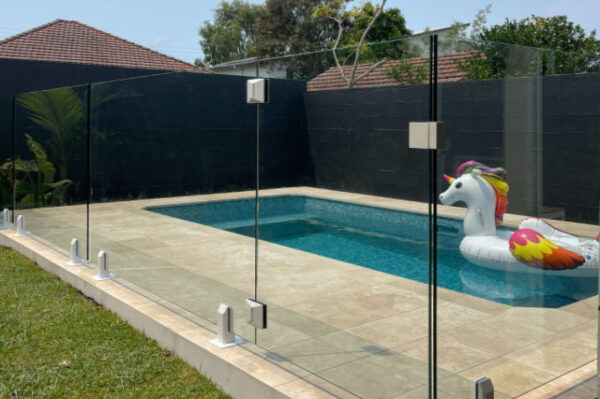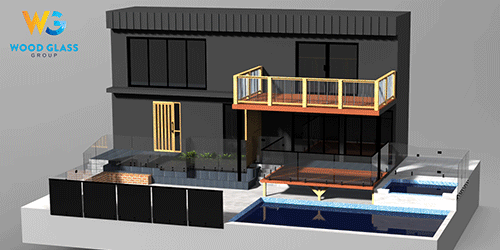
How is Toughened pool fencing glass made
Exploring the characteristics and advantages of tempered glass material
Your backyard and pool area might look absolutely stunning with some glass fencing.
Glass fences have several advantages. They don’t obstruct your view or ruin the aesthetics of your environment, they are seamless and add shelter and protection to your valued pool. They also will serve as a really great enclosure to better keep an eye out on your children or preventing your pets or feral animals to enter the pool area.
Having said that, not all glass is created equal! Your average window-grade glass won’t cut it for a proper fencing application: you are going to need toughened glass.
In case you are not familiar with it, toughened glass is actually a type of glass that can be up to 5 times stronger than regular glass. Although it will still remain relatively fragile, being glass, it certainly offers more protection against hits or weathering, and it is more reliable for outdoors use.
Often referred to as “tempered glass”, this material is created through a methodology that involves thermal and chemical processing.
How is it made? Breaking down the fabrication process.
Heat or chemical reactions will cause the glass to transform. The outer surface will compress, while the internal glass material will get tenser. Essentially, the glass is being broken from the inside out, and it will actually crumble into a bunch of really tiny granular chunk that will likely pose no risk of injury.
Ironically, the glass is made stronger…by breaking it!
The micro-breakage however, doesn’t just add strength to the glass but also prevents it from breaking in sharp, dangerous spikes. Should the glass ever break, it will simply crumble up in harmless granules.
Usually, the manufacturing process happens onto a rolling platform or table, which will move the glass into a furnace that will heat up the glass at a certain temperature, usually ranging from 560 to as high as 720 Celsius degrees.
As you might know, glass items might fracture if you expose it to a wildly varying temperature shift. This is the core concept behind the production of toughened glass, which leads us to the next phase of the manufacturing of this remarkable glass product.
The second step of the process happens through the rapid cooling of the glass. When still very hot, the glass will go through cold air drafts, which contributed to the process of inner fracture of the glass.
Heat and rapid cooling are well-established elements of this process, but they are not the sole options for toughened glass manufacturers. There is also an alternative toughening approach that happens through chemical reactions, by essentially shifting the chemical composition of the glass itself. This different method involves using ion exchange of sodium ions in the glass with potassium ions, which are actually much larger. This happens by submerging glass in a molten potassium nitrate compound. This process is commonly used when manufacturers are trying to obtain the maximum durability possible, or mold the glass in complex shapes.
The two different production approaches are all equally effective, and they work well in different application. There are a few technical disadvantages of toughened glass: the product is not as easy to mold into shapes as regular glass, and it needs to be pre-cut to the right size or pressed to shape before the toughening process begins.
Since the edges of toughened glass panes are often subject to more stress, they are more prone to damage, and they could be seen as the weakest spots in the material.
What is the point of the entire process? When untempered (or regular) glass breaks, it will often splinter in very sharp pieces. As you probably understand, broken glass is dangerous and it is very easy to get cut by it. On the other hand, when tempered/toughened glass breaks, the granular crumbles are not going to splinter, and they will not be as sharp and dangerous. This is exactly the reason why toughened glass is often used as a safer option in many public establishments or even in households that are more concerned with safety and injury prevention.
When normal glass breaks, it often ends up into sharp chunks. Toughened glass will simply crumble apart, often leaving no dangerous debris behind.
In addition to that particular quality and different breakage response, toughened glass is actually stronger, as the name implies. As mentioned earlier this material can be up to five times sturdier than regular glass. The strength of toughened glass largely depending on the particular compression applied during its fabrication.
A brief history of toughened glass
The roots of modern tempered glass date back to the mid 19th century when a French glassmaker came up with a process of “tempering” by submerging molten glass into a bath of hot oil. The method became widespread throughout Europe and was eventually brought to the United States at the turn of the century. By the mid 20th century, toughened glass was popular throughout the world.
Even though toughened glass was invented in the 1830s, the concept of tempered/toughened glass was known much earlier in history, albeit not yet understood. As far back as during the 17th century, people observed that molten glass would grow stronger when dropped in a bucket of cold water for rapid cooling.
Famously, King Charles II marveled at the so-called “Prince Rupert’s Drops”, which were bits of glass in the shape of a teardrop, made by dropping the molten glass in a bucket of water.
Essentially, the front end of the glass was really hard to break, and it would even resist hammer blows. On the other hand, it would crumble into little pieces by hitting the tail end even slightly!
Common Uses and Applications
Toughened glass has been commonly used in many different environments – not only households but also commercial and public spaces. Banks or Museums often use tempered glass enclosure for protection and safe display of items.
Retail stores such as jewelry or electronics shop selling higher end items would also often use tempered glass in order to offer a further layer of protection to their items. Some extremely strong forms of toughened glass are actually bulletproof. They won’t deflect or be immune to bullets, but the bullet is not strong enough to penetrate the actual glass. Even the strongest regular glass would simply splinter or break with the pressure of a bullet or a weapon hit. However, tempered glass, which is essentially filled with microscopic glass fracture will simply crumble up around the bullet or entry wound. An attacker will not have enough time to actually destroy the glass before authorities or security agent would stop an attacker!
Thankfully, you might not have anybody trying to shoot up your home, but it sure feels nice to have an extra layer of safety! When it comes to Brisbane pool fencing application, toughened glass is often regarded as one of the finest choices in terms of material.
Wooden fences look nice and have a very cool old-fashioned look, but they are full of shortcoming. Wood is very vulnerable to weathering and it requires very frequent maintenance. Eventually, wood will also splinter, leaving dangerous debris and spikes all around the pool area. This debris might also end up in the water, affecting the safety and integrity of your pool.
Regular glass is a big no-no for obvious reason. It is sometimes used as a cheaper alternative to toughened glass, but surely at the expense of safety. Should something (or someone) ever bump on a glass fence, it will send it into a million chunks.
Did you ever accidentally break a glass or mug? The terrible feeling of never knowing whether you managed to catch all the little pieces and chunks of broken material is really annoying, especially when you are worried about the safety of your family. Imagine that feeling, in your pool area. The last thing you want is having to worry about glass going all over the place.
This issue will be completed avoided with toughened glass. Should the material ever break, the crumbles will not likely fly around violently, and they will be easy to gather and destroy. They will also be less likely to cause injuries since they are not going to be very sharp at all.



